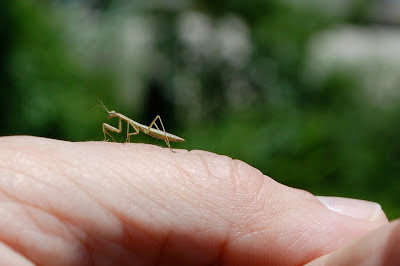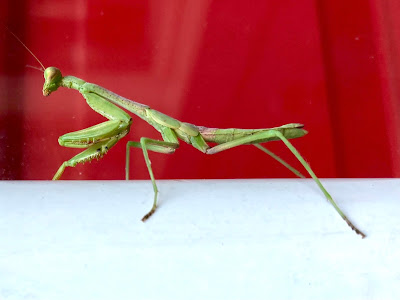 |
| Although I may have made surprised noises in both cases, I was happy to see them. I can't think of another three-inch long plus insect I feel that way about. |
 |
| Still -- seems like only yesterday they were so small I could have fit a hundred of them in the palm of my hand. Click to enlarge. |












